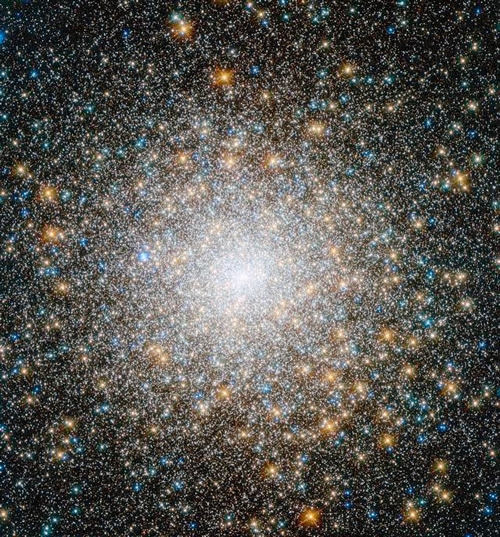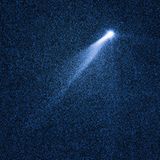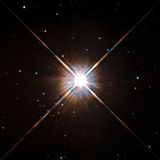
This incredibly intense image of globular cluster Messier 15, is comprised of observations from the NASA/ESA Hubble Space Telescope's Wide Field Camera 3 and Advanced Camera for Surveys in the ultraviolet, infrared and optical parts of the spectrum. To date, it is one of the most detailed images ever taken of this stellar senior citizen and reveals a wealth of information.
Orbiting the center of the Milky Way and located some 35,000 light years away in the constellation of Pegasus, this sparkling star cluster is home to more than 100,000 members and could be harboring a dark secret - a rare type of black hole located in its heart. Cataloged as Messier 15, this globular cluster holds many distinctions. Not only is it one of the most concentrated star clusters of its type, but it's also one of the oldest known, with an estimated age of around 12 billion years.
Here we see intensely hot blue stars sharing the field with cooler, golden-colored neighbors. Mutual attraction binds them together and most of the cluster's mass is concentrated at its core. However, there's more there than just beauty... there are hidden mysteries: In 2002, astronomers utilizing the Hubble found Messier 15 to have a dark enigma lurking in its core. It could be a gathering of dark neutron stars - or it could be an intermediate-mass black hole. According to researchers, of the two possibilities, chances are in favor of presence of a black hole, similar to the one spotted in massive globular cluster Mayall II.
Globular clusters contain some of the most ancient stars in the Universe - stars which are all about the same age. But M15 is a rule breaker. It may contain neutron stars which formed from the collapse of a massive star. They are very hot and very dense, with an average mass of around two solar masses contained within a radius of tens of kilometers. It is a scenario you could see happening where so many are gathered!
On the other hand, we have intermediate-mass black holes. These denizens of the deep are thought to be created when several smaller, stellar-mass black holes combine - or as the result of a collision between massive stars in dense clusters. Again, it's a scene that is likely, given the fact that Messier 15 is one of the most compact star clusters known.
Need more? Then take into account a third possibility. The intermediate-mass black hole may have been formed during the time of the Big Bang. By studying its mass, we might learn much more about how black holes evolve and grow, not only within clusters like M15, but in galaxies as well.
Did you happen to notice a blue fuzzy just to the left of the cluster's center in the image? As amateur astronomers well know, Messier 15 is also home to another anomaly: a planetary nebula. It is known as Pease 1 and it is the first planetary nebula to ever be discovered inside a globular cluster. Since its discovery, only three other globular clusters have been found to also contain planetary nebulae: Messier 22, NGC 6441, and Palomar 6.
Why so rare? Remember your globular cluster rules; usually the stars are all about the same age. In the case of planetary nebulae, they are low to moderate mass stars which live short, fast lives and really don't "belong" in a globular cluster!
Amazin' stuff...
About Tammy Plotner - Tammy is a professional astronomy author, President Emeritus of Warren Rupp Observatory and retired Astronomical League Executive Secretary. She's received a vast number of astronomy achievement and observing awards, including the Great Lakes Astronomy Achievement Award, RG Wright Service Award and the first woman astronomer to achieve Comet Hunter's Gold Status.



















